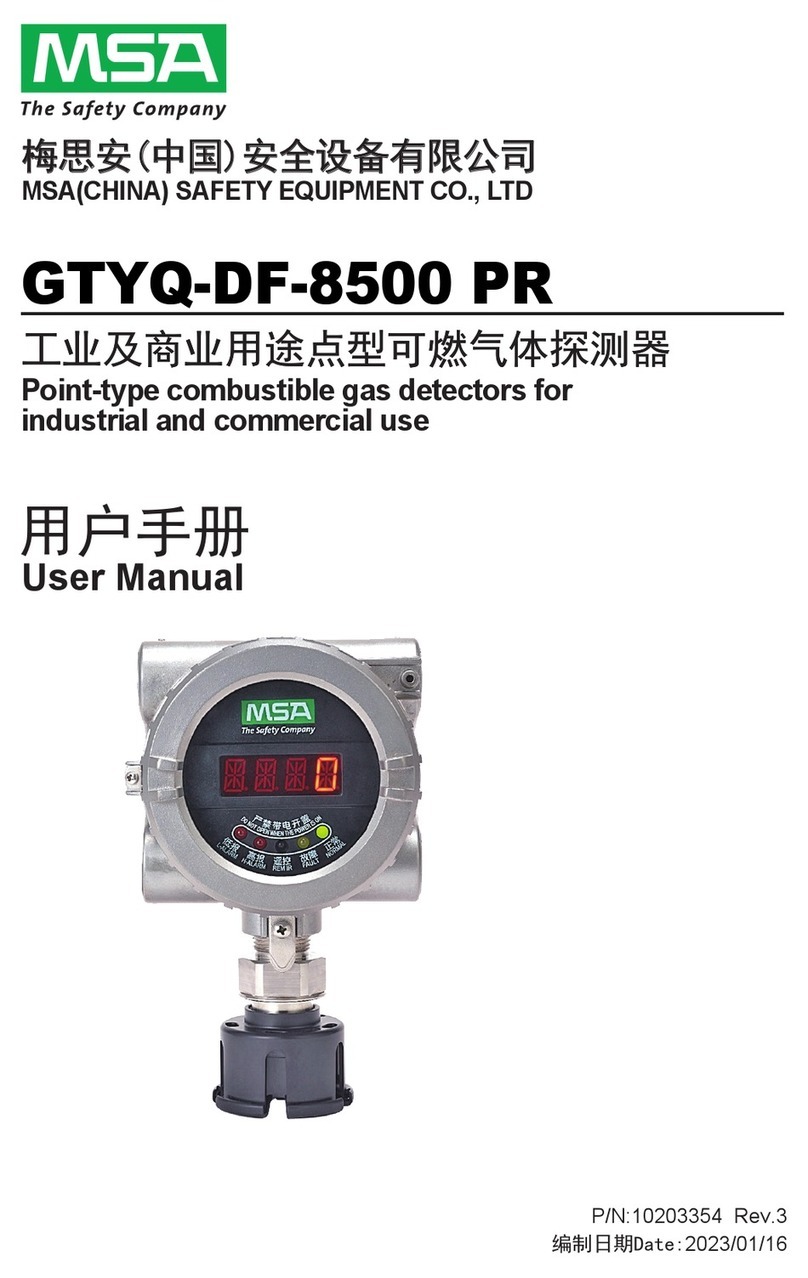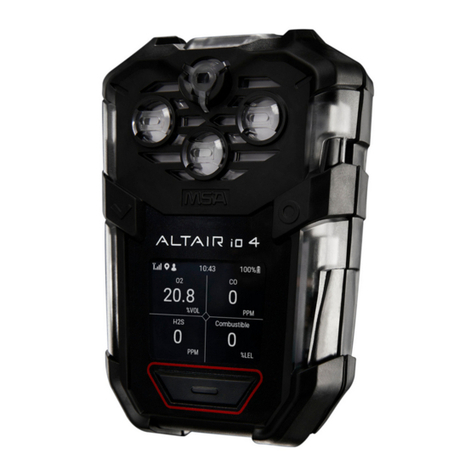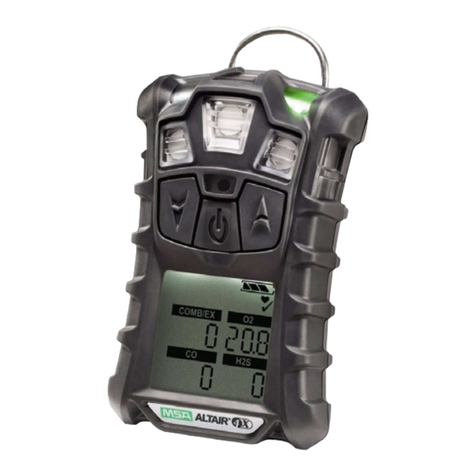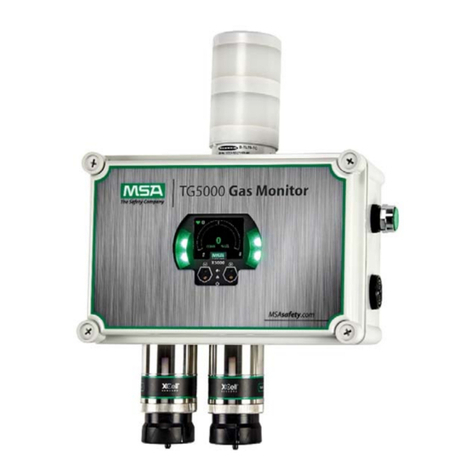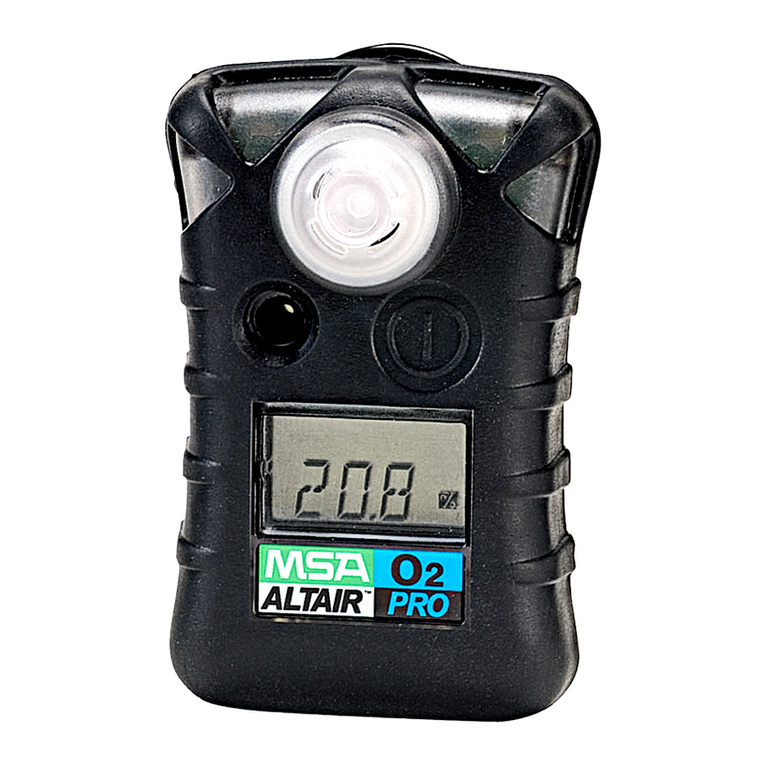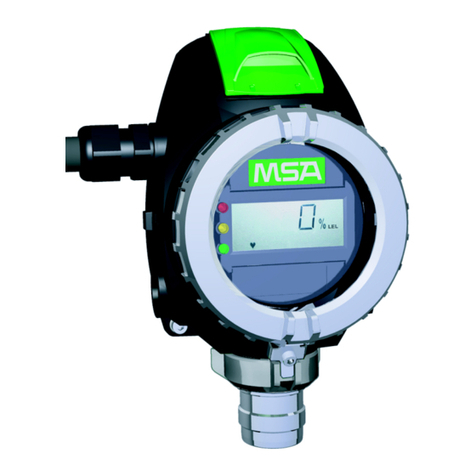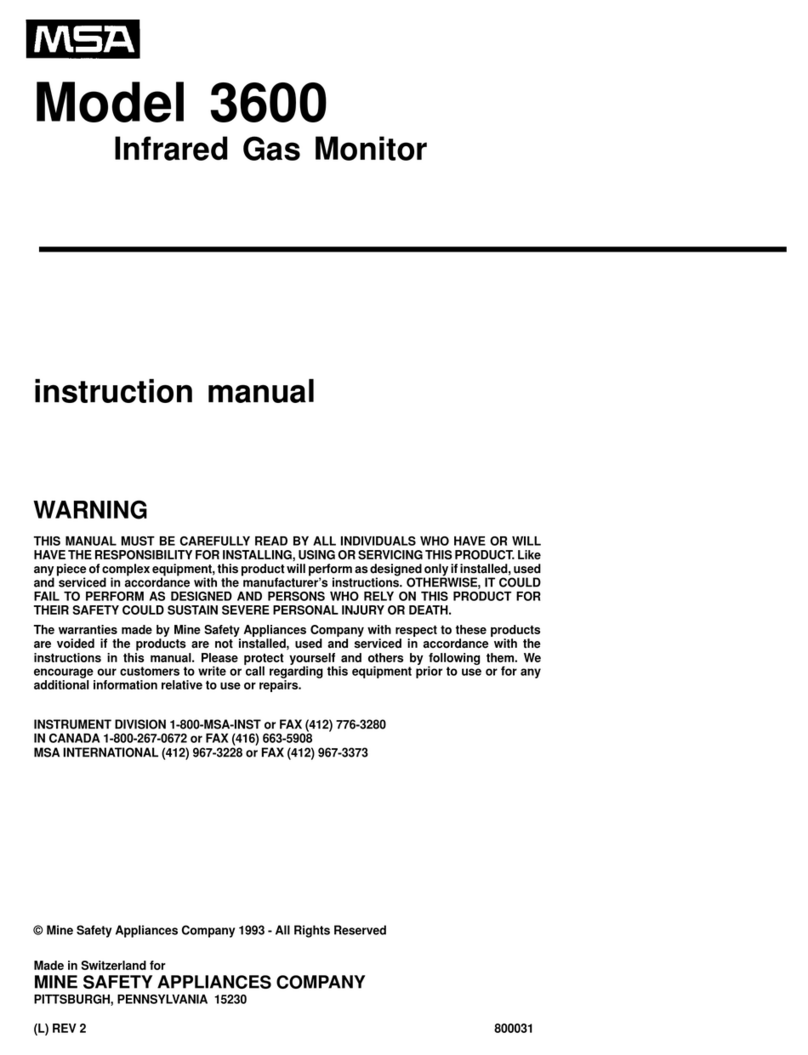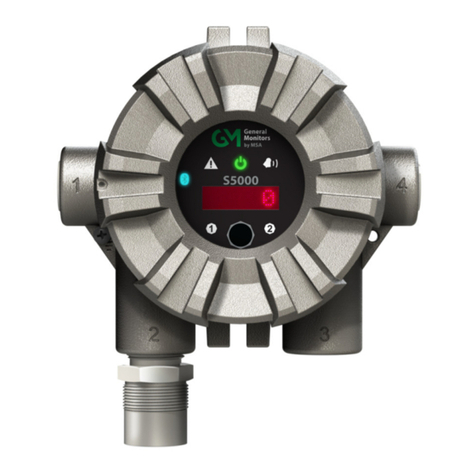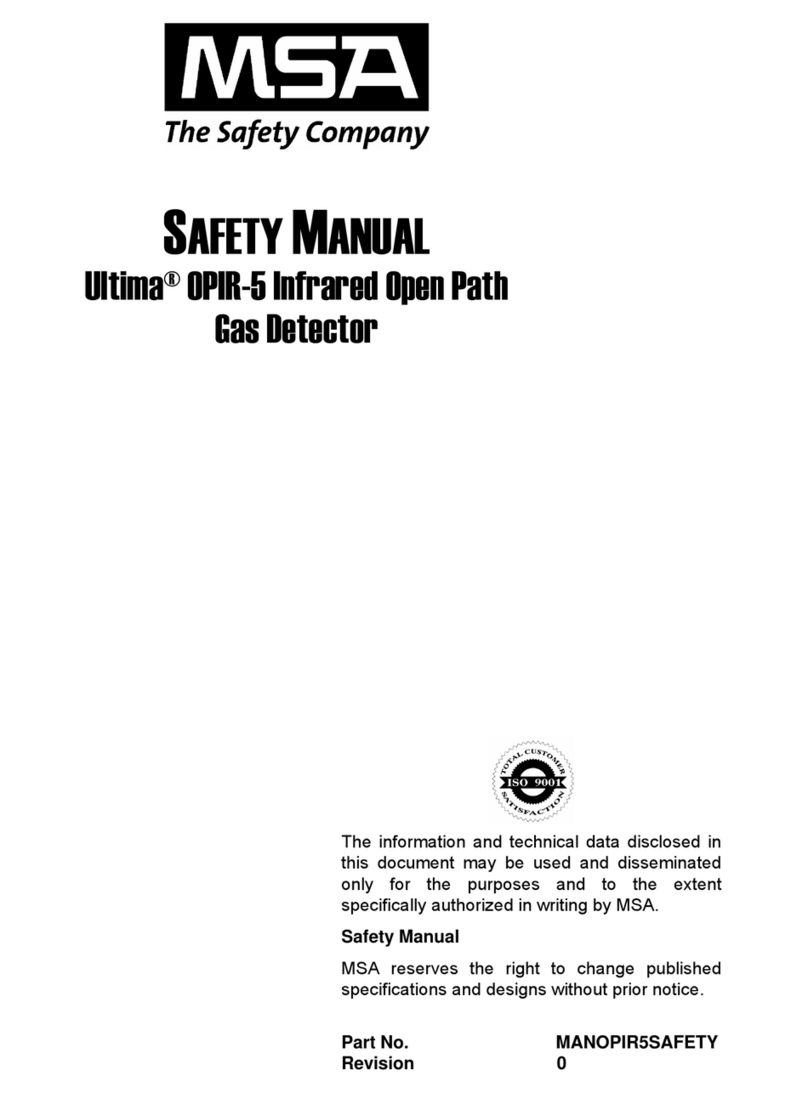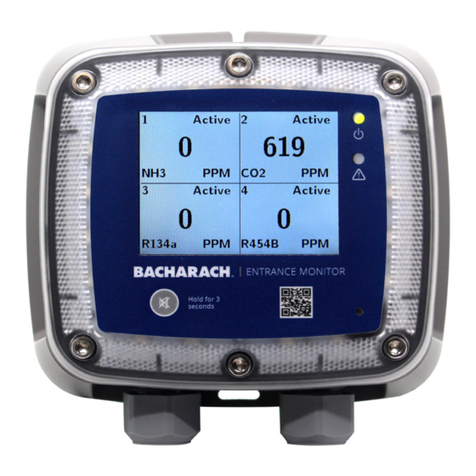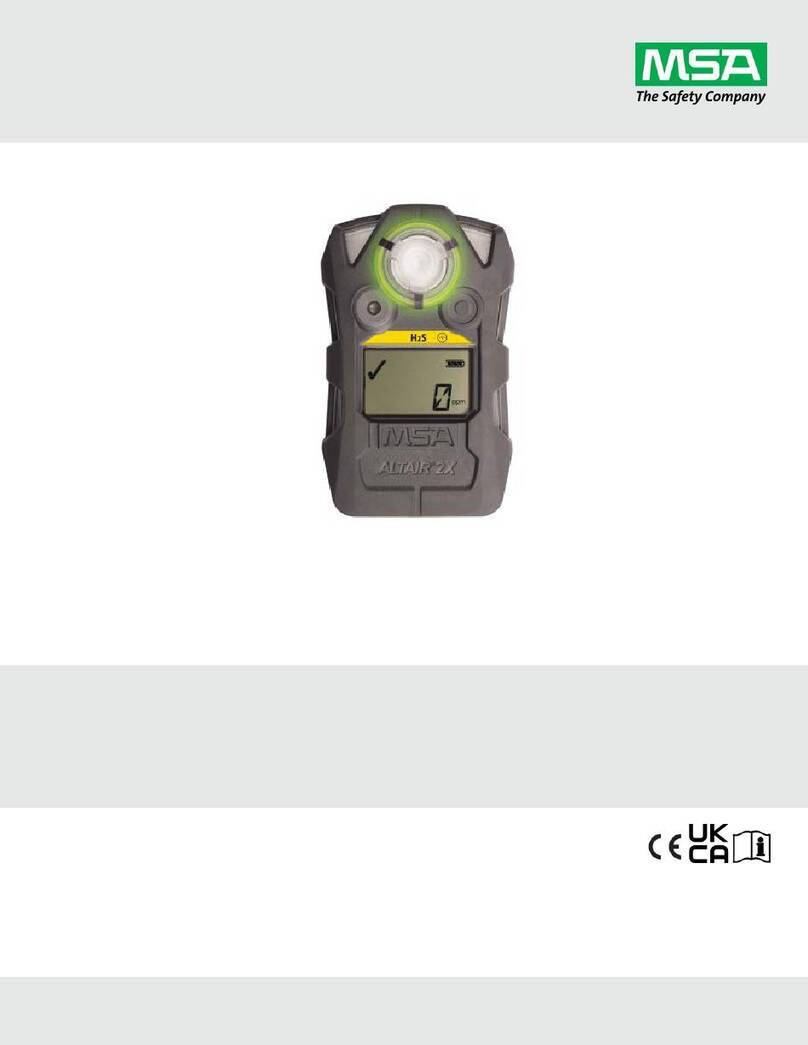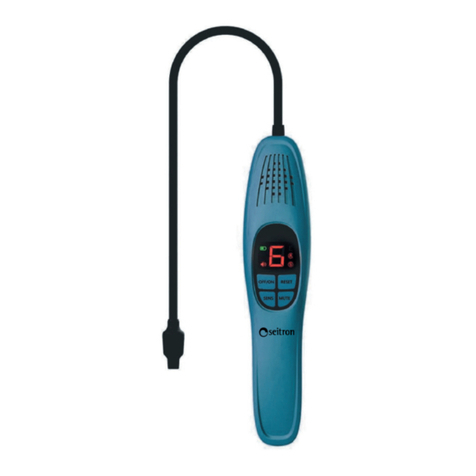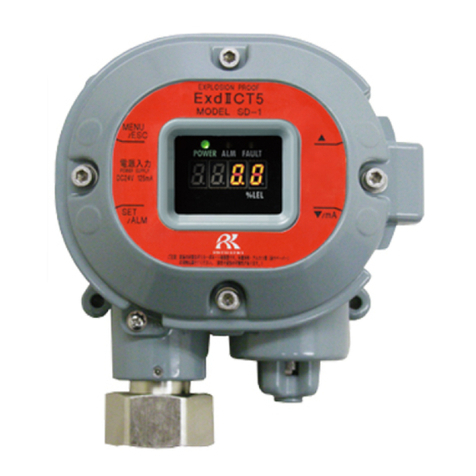
1 Safety Regulations
1.1 Correct Use
The MSA Gas Detector Series 47K is designed to continuously monitor the atmosphere for the presence of potentially
explosive gas or vapour in air in the range 0 to 100% LEL.
It is designed for use as an integral part of an MSA fixed gas detection system for the protection of industrial plant and
workers.
It is imperative that this operating manual be read and observed when using the system. In particular, the safety
instructions, as well as the information for the use and operation of the apparatus, must be carefully read and observed.
Furthermore, the national regulations applicable in the user's country must be taken into account for a safe use.
DANGER!
This product is supporting life and health. Inappropriate use, maintenance or servicing may affect the function of the
device and thereby seriously compromise the user’s life.
Before use, the product operability must be verified. The product must not be used if the function test is unsuccessful, it
is damaged, a competent servicing/ maintenance has not been made, genuine MSA spare parts have not been used.
Failure to follow this warning will result in serious personal injury or death.
Alternative use, or use outside this specification will be considered as non-compliance. This also applies especially to
unauthorised alterations to the apparatus and to commissioning work that has not been carried out by MSA or
authorised persons.
1.2 Liability Information
MSA accepts no liability in cases where the product has been used inappropriately or not as intended. The selection and
use of the product are the exclusive responsibility of the individual operator.
Product liability claims, warranties also as guarantees made by MSA with respect to the product are voided, if it is not
used, serviced or maintained in accordance with the instructions in this manual.
1.3 Application, Advice, and Restrictions
This Manual should be carefully read by those responsible for use and maintenance of the gas detection and monitoring
system.
• The series 47K catalytic sensor is suitable for the detection of gases or vapours in air with a concentration below
the Lower Explosive Limit [LEL].
• The series 47K catalytic sensor cannot measure concentrations of gases or vapours in inert atmospheres or
oxygen deficient atmospheres. The European standard EN 60079-29-2 indicates an Oxygen concentration higher
than 10 vol% is necessary for correct operation of catalytic sensors.
WARNING!
The certification does not permit use of the series 47K sensor in oxygen enriched atmospheres.
Failure to follow this warning can result in serious personal injury or death.
• The series 47K catalytic sensors can be poisoned by high levels or long exposure to certain substances present in
the atmosphere being monitored. When a catalytic sensor is installed in a place where those substances may be
present, to ensure the correct operation and measurement accuracy the sensor should be calibrated more
frequently.
• The sensitivity of the series 47K catalytic sensors is reduced by the presence of silanes, silicates, silicones,
tetraethyl lead, halogen compounds, sulfurous compounds, organic-phosphorous compounds and compounds
5 Series 47K GB
1 Safety Regulations













